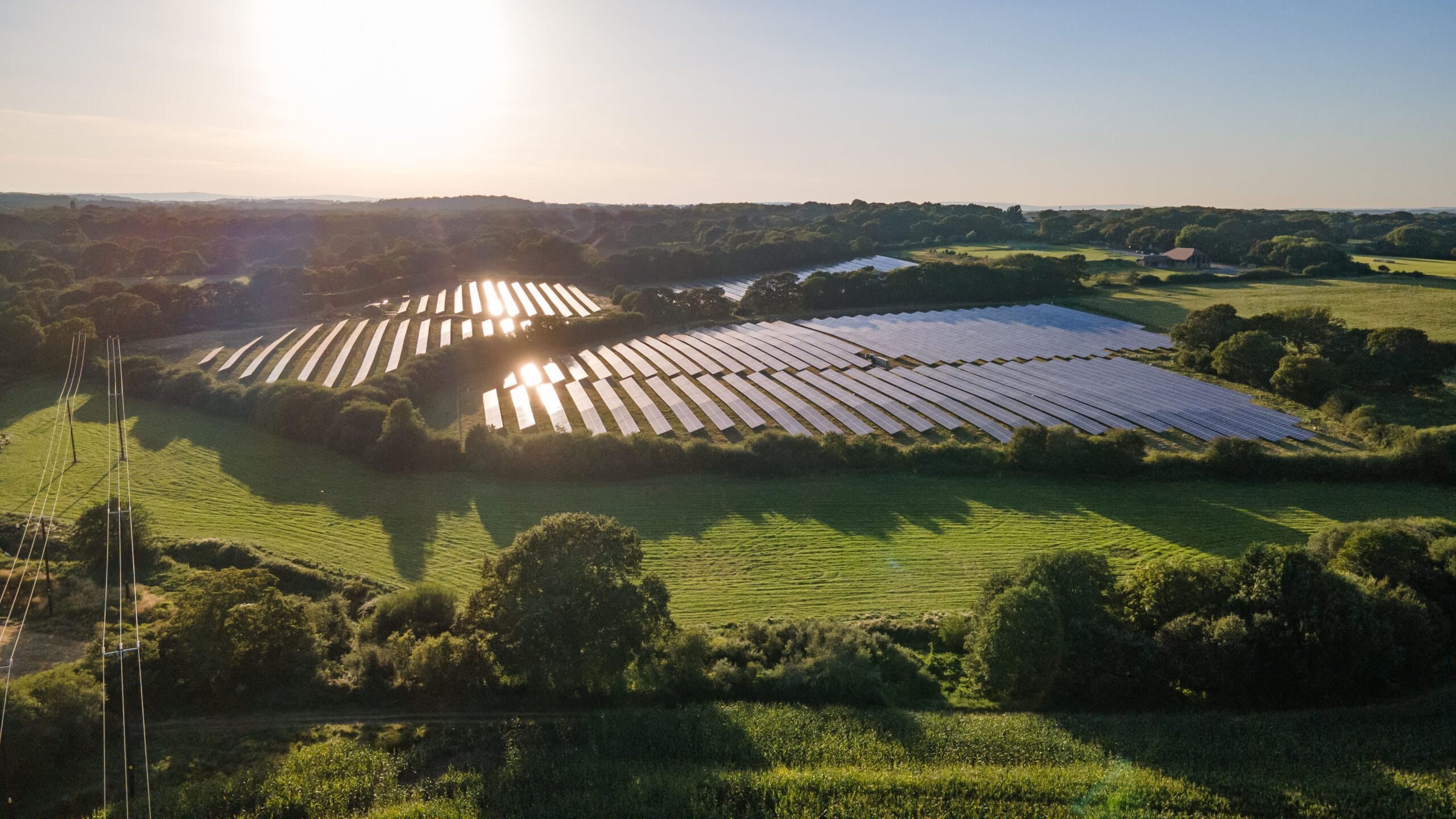A brighter future for renewable energy schemes?
As an established partner for installers and operators of renewable energy assets, Motion provides transport, highways and infrastructure advice and support at every stage of the planning application process, from initial feasibility to post-planning detailed design. Director, John Russell, discusses obstacles that are routinely encountered in renewable energy applications, and assesses whether proposed changes to the National Planning Policy Framework (NPPF) go far enough.
 The government’s target to decarbonise the power sector is an ambition to which Motion is resolutely committed. With support for well over 100 planning applications for solar farms and battery energy storage systems (BESS), we share our clients’ vision of greening the UK’s energy network for the benefit of future generations. Proposed amendments to the NPPF will reaffirm the new government’s backing for clean energy delivery and protecting the environment, and it has been particularly encouraging to see a noticeable shift in support for onshore wind.
The government’s target to decarbonise the power sector is an ambition to which Motion is resolutely committed. With support for well over 100 planning applications for solar farms and battery energy storage systems (BESS), we share our clients’ vision of greening the UK’s energy network for the benefit of future generations. Proposed amendments to the NPPF will reaffirm the new government’s backing for clean energy delivery and protecting the environment, and it has been particularly encouraging to see a noticeable shift in support for onshore wind.
Removing obstacles
The new framework might even place a stronger requirement on local authorities to proactively identify sites for renewable energy projects to aid eventual approval of such schemes. Proposals to review the ‘nationally significant’ threshold for the output from solar installations[1] may also remove two key barriers to development – cost and time. Another move that must surely be welcomed is the removal of the requirement to consider the availability of agricultural land for food production.
In contrast, our experience on the ground up to now has been one of overcoming challenges on a daily basis. To date, none of our projects have been refused on highway grounds and our impact has already led to clean energy output the equivalent of one nuclear power plant. However, there is no doubt that the renewable energy planning context has become more testing. Even with a more supportive NPPF, transport and highways advice needs to be no less robust, to help officers dispel mounting local opposition.
If the new government is truly committed to decarbonising our energy network, it needs to place even greater emphasis on land allocation for small-scale renewable energy projects. Local Plan Reviews also need to avoid the ambiguity that arises when grouping renewables with leisure and other uses. Stipulations that are unworkable for solar and renewables, such as demonstrating active travel to and from a remote, rural site, also need to be reviewed as a matter of urgency.
Demonstrating planning balance
Even when sites are allocated as suitable for renewable energy schemes, there are currently too few and many are still hampered by the often-limited understanding of how these sites are built and operated post construction. And there is currently no minimum target for small-scale renewable energy generation. Such a target might encourage, or require, local planning authorities (LPAs) to approve more schemes although in some parts of the country, targets might be restrictive if the LPA began refusing applications once the target had been reached.
As advisors to energy installers, we are acutely aware of our duty to get it right first time. Appeals are costly and time consuming. But for small-scale renewable energy operators with relatively low profit margins, appealing after a refusal carries a disproportionate burden and risk. The starting point for an inspector during a planning appeal for new homes is that housing needs to be delivered to meet local targets. With residential development, there is an indisputable planning balance argument. In contrast, with renewable energy there is no such requirement and the case for the appellant may therefore be considerably weaker.
A logistical challenge?
Demonstrating why a particular site is suitable takes time and involves meticulous research, communication and presentation. Our role is to persuade officers that an application should not be refused. But should renewable energy operators have to approach an application from this premise? Surely, the starting point must be to assess and overcome logistical and physical constraints that might prevent heavy goods vehicles (HGVs) accessing the intended site.
I believe we should not need to argue the case for the principle of solar farms or BESS or need to demonstrate the suitability of a proposed site. That precedent should be already established.
Public opposition seems more prevalent than ever, often based on the perception that the local highway network is unsuitable for the proposed development. With elected members under pressure from their constituents, it is even more important that transport planners engage with officers in highways departments to help allay those concerns.
Construction traffic management
Road networks in rural areas are often unsuitable for mass movement of HGVs, but this is rarely the outcome of a solar farm or BESS. Anticipated vehicle movements – which are low during the construction phase and even lower when the scheme is operational – need to be explained and communicated clearly to officers, members and local residents. With data-driven argument this can be achieved but it needs to take place as early in the planning process as possible.
In-depth engagement with all the relevant stakeholders will inevitably extend the planning application process. It also requires an investment of time and needs a certain skill and sensitivity. Being aware of the local context and genuine concerns, and showing a willingness to meet people on site to gain an understanding of any physical constraints, is even more critical for solar energy applications. But so is demonstrating and communicating the lasting benefits – such as new passing places on narrow country lanes – that will serve the community long after the 40-year life of the installation when the land is returned to its former agricultural use.
Beyond engineering
Transport and traffic are frequently easy targets for opposition. Our priority as transport planners is to examine ways to overcome physical constraints to enable abnormal loads to pass through narrow lanes, design passing places or plan construction of access tracks.
I am also of the firm belief that our contribution to an application extends beyond the engineering and geometric parameters to consider the social impact of a scheme. This means being adept at tuning in to the issues and concerns as early as possible, to facilitate dialogue and work towards achieving the optimal outcome for client, council and community.
While local concerns will undoubtedly always surface, a national requirement to deliver onshore renewable energy schemes within a supportive framework must be delivered to help accelerate the country’s transition to a cleaner, greener energy system. That would mean that transport planning consultants could focus in on what we do best in the renewable space – the physical and logistical problem solving.
[1] Increasing the threshold at which solar projects are determined as ‘nationally significant’ to 150MW



